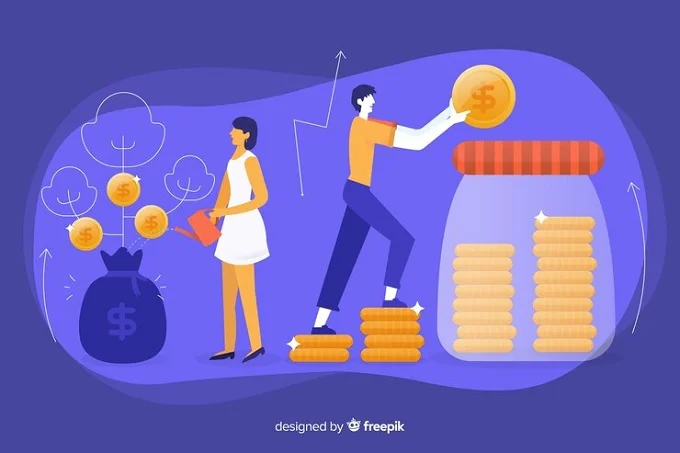In this guide, we’ll break down the ins and outs of compound interest in simple terms. We’ll explore how it differs from simple interest, dive into the math behind it (don’t worry, we’ll keep it easy!), and show you real-life examples of its incredible power. By the end of this article, you’ll understand why compound interest is often called the “eighth wonder of the world” and how you can make it work for you.
So, whether you’re just starting to save or looking to boost your investment strategy, buckle up! You’re about to discover a financial tool that could change the way you think about money forever.
Definition of Compound Interest
What is Compound Interest?
Compound interest is like a snowball rolling down a hill, getting bigger and bigger as it goes. It’s the interest you earn not just on your initial savings (called the principal), but also on the interest you’ve already earned. In other words, it’s interest on interest!
Let’s break it down with a simple example:
Imagine you put $100 in a savings account that pays 5% interest annually. After the first year, you’d earn $5 in interest, giving you a total of $105. But here’s where the magic happens: in the second year, you don’t just earn interest on your original $100. You earn interest on the whole $105! This means you’d earn $5.25 in interest the second year, bringing your total to $110.25.
How is Compound Interest Different from Simple Interest?
Now, you might be wondering, “How is this different from regular old interest?” Well, that “regular” interest is called simple interest, and it works quite differently.
With simple interest, you only earn interest on your initial principal. Using our previous example, if you had $100 in an account with 5% simple interest, you’d earn $5 each year, no matter how long you keep the money there. After two years, you’d have $110 ($100 + $5 + $5), not $110.25 like with compound interest.
This might not seem like a big difference at first, but over time, compound interest can lead to significantly more growth than simple interest. It’s like the difference between a straight line and a curve that gets steeper and steeper.
The Mathematics Behind Compound Interest
The Compound Interest Formula
Now, don’t panic! We’re going to look at a formula, but I promise to make it as painless as possible. The compound interest formula is:
A = P(1 + r/n)^(nt)
Where:
- A is the final amount
- P is the principal (initial investment)
- r is the annual interest rate (in decimal form)
- n is the number of times interest is compounded per year
- t is the number of years
This might look scary, but let’s break it down step by step.
Examples of Compound Interest Calculations
Let’s use our earlier example: $100 invested at 5% interest, compounded annually for 2 years.
- P = $100 (our initial investment)
- r = 0.05 (5% written as a decimal)
- n = 1 (compounded once per year)
- t = 2 (for two years)
Plugging these into our formula:
A = 100(1 + 0.05/1)^(12) A = 100(1.05)^2 A = 100 1.1025 A = $110.25
See? That matches what we calculated earlier!
Now, let’s say we kept that $100 invested for 10 years instead of 2. Using the same formula:
A = 100(1 + 0.05/1)^(1*10) A = 100(1.05)^10 A = $162.89
That’s a gain of $62.89, or nearly 63%! And all you did was let your money sit there.
The Power of Compound Interest
How Compound Interest Grows Investments Over Time
The true power of compound interest becomes clear when you look at its effects over long periods. It’s like a snowball effect – the longer it goes on, the bigger the impact.
Let’s compare three scenarios, all starting with $1,000 invested at 7% interest, compounded annually:
- After 10 years: $1,967.15
- After 20 years: $3,869.68
- After 30 years: $7,612.26
Notice how the growth accelerates? In the first 10 years, you gain about $967. In the next 10, you gain about $1,902. And in the final 10, you gain a whopping $3,742!
Real-Life Examples of the Power of Compound Interest
To really drive home how powerful compound interest can be, let’s look at a real-world example.
Meet Sarah and Mike, both 25 years old. Sarah starts investing $200 a month in a retirement account earning an average of 7% annually. Mike waits until he’s 35 to start, but then invests $400 a month at the same rate.
By the time they’re 65:
- Sarah will have invested a total of $96,000 over 40 years.
- Mike will have invested $144,000 over 30 years.
But here’s the kicker:
- Sarah’s account will be worth about $708,000.
- Mike’s account will be worth about $546,000.
Even though Mike invested 50% more money, he ends up with less because Sarah had an extra 10 years for compound interest to work its magic!
How Compound Interest Works in Different Financial Products
Compound interest isn’t just for savings accounts. It plays a role in many financial products, sometimes working for you, and sometimes against you.
Compound Interest in Savings Accounts
Most savings accounts use compound interest, though the frequency can vary. Some compound daily, others monthly or quarterly. The more frequently interest is compounded, the faster your money grows.
For example, $1,000 in an account with 5% interest would grow to:
- $1,051.16 if compounded annually
- $1,051.68 if compounded monthly
- $1,051.71 if compounded daily
The differences might seem small, but they add up over time and with larger amounts.
Compound Interest in Loans and Credit Cards
Here’s where compound interest can work against you. When you borrow money, compound interest can make your debt grow quickly if you’re not careful.
Credit cards are a prime example. If you don’t pay your full balance each month, interest is added to your balance. Next month, you’re charged interest on that new, higher balance. This is how people can end up in credit card debt that seems to snowball out of control.
Compound Interest in Investments
Many investments, like stocks and mutual funds, don’t directly earn compound interest. Instead, they can achieve a compound effect through reinvestment.
For example, if you own stocks that pay dividends, you can choose to reinvest those dividends to buy more shares. Those new shares then earn their own dividends, creating a compounding effect.
The Effect of Compound Frequency
The frequency of compounding can have a significant impact on how quickly your money grows. Let’s look at how different compounding frequencies affect the growth of $10,000 invested at 5% interest over 10 years:
| Compounding Frequency | Final Amount |
|---|---|
| Annually | $16,288.95 |
| Semi-annually | $16,386.07 |
| Quarterly | $16,435.75 |
| Monthly | $16,470.09 |
| Daily | $16,486.65 |
As you can see, more frequent compounding results in more growth. However, the difference between monthly and daily compounding is relatively small. This is why many financial institutions compound interest monthly – it’s a good balance between growth for the customer and simplicity for the bank.
Tips to Maximize Compound Interest
Now that you understand the power of compound interest, here are some tips to make it work for you:
- Start early: The earlier you start saving or investing, the more time compound interest has to work its magic.
- Be consistent: Regular contributions, even small ones, can significantly boost the power of compound interest.
- Reinvest earnings: When possible, reinvest dividends and interest payments to take full advantage of compounding.
- Choose accounts with higher interest rates: Shop around for the best rates on savings accounts and investments.
- Be patient: Compound interest works best over long periods. Don’t be tempted to withdraw your money too soon.
Conclusion
Compound interest is a powerful force in the world of finance. It can help your savings grow exponentially over time, but it can also cause debts to spiral if not managed carefully. By understanding how compound interest works, you can make smarter financial decisions and set yourself up for a more secure financial future.
Remember, the key to harnessing the power of compound interest is time. The earlier you start saving and investing, the more you stand to gain. So why wait? Start putting compound interest to work for you today!
Whether you’re saving for retirement, a down payment on a house, or just building an emergency fund, compound interest can be your ally. Use the knowledge you’ve gained from this guide to inform your financial decisions, and watch your money grow over time. Your future self will thank you!



